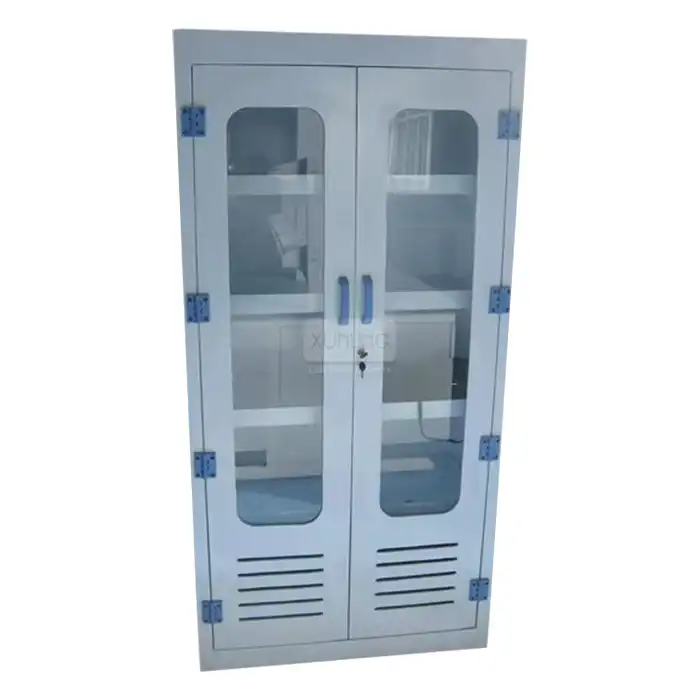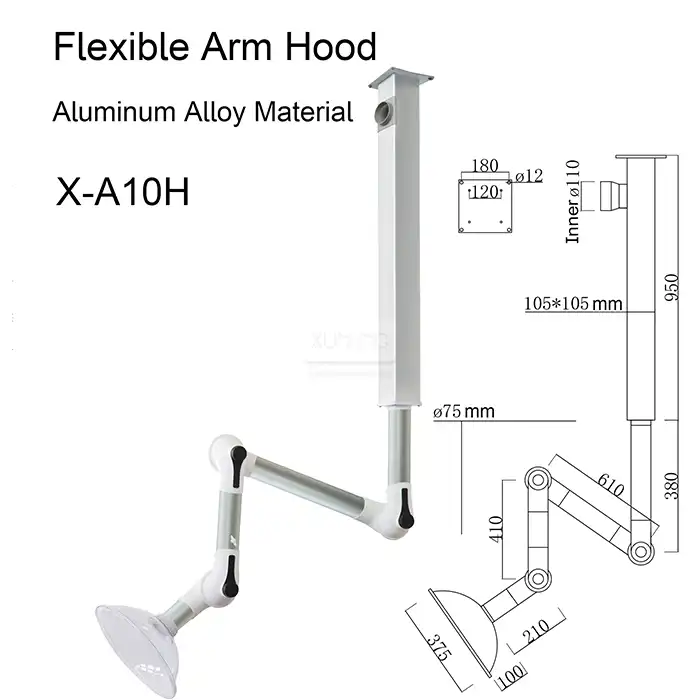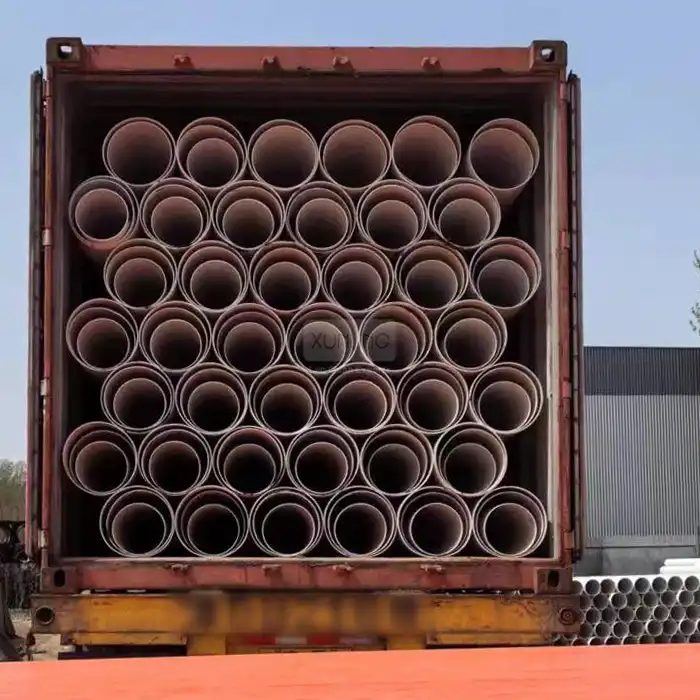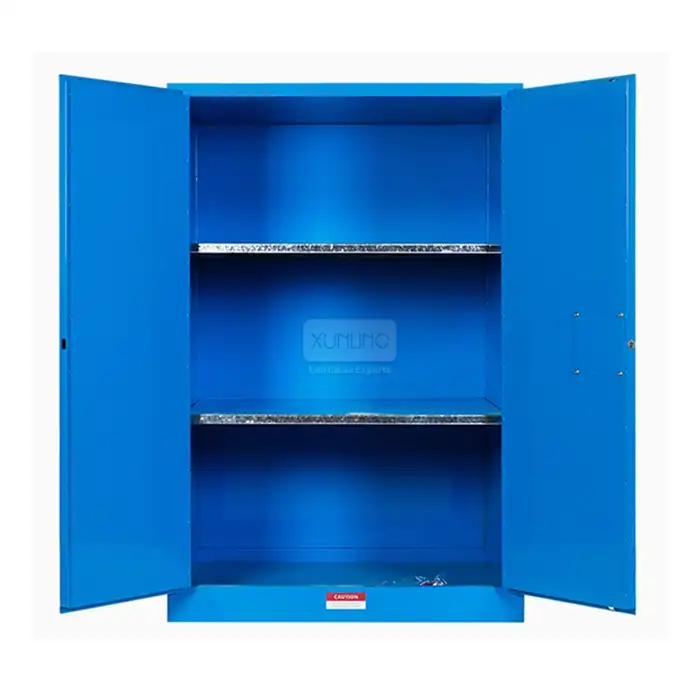
What is the maintenance required for a fume extractor arm made of PP and aluminum alloy?
2025-04-14 10:37:02
Maintaining a fume extractor arm constructed from PP (polypropylene) and aluminum alloy requires systematic care and attention to ensure optimal performance and longevity. These extraction systems play a crucial role in laboratory safety by removing harmful fumes, gases, and particles from workspaces. The combination of PP and aluminum alloy provides excellent chemical resistance and durability, but proper maintenance is essential to preserve these qualities. Understanding the specific maintenance requirements helps laboratory managers and technicians implement effective care routines that extend equipment life while maintaining safe working conditions.
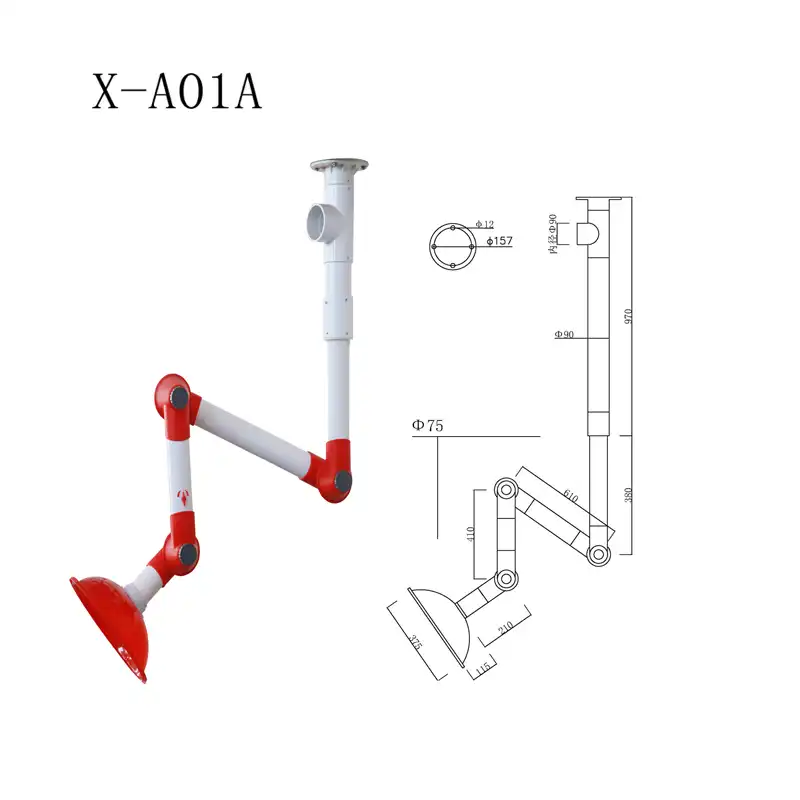
Regular Inspection and Cleaning Protocols
Daily Visual Inspections
Regular visual inspections form the foundation of proper maintenance for Fume Extractor Arm PP And Aluminum Alloy systems. The daily inspection process should include examining all visible components for signs of wear, damage, or contamination. The joints and sealing components deserve particular attention, as these areas often experience the most stress during operation. In our advanced fume extraction systems, the joints feature high-density polypropylene material, engineered to be 360° swiveled, allowing for easy disassembly, cleansing, and re-assembly swiftly. The sealing rings, made from corrosion-resistant high-density rubber, require regular inspection to ensure they maintain their protective properties. Technicians should document any observations and maintain detailed records of inspection findings, creating a comprehensive maintenance history that can help predict potential issues before they become critical problems.
Monthly Deep Cleaning Procedures
The Fume Extractor Arm PP And Aluminum Alloy requires thorough monthly cleaning to maintain optimal performance. This process involves disassembling the arm components according to manufacturer specifications and cleaning each part individually. The PP components should be cleaned using appropriate non-abrasive cleaners that won't compromise the material's integrity. For aluminum alloy parts, specialized metal-safe cleaning solutions should be used to prevent corrosion or surface damage. During the cleaning process, particular attention should be paid to the joints and sealing areas. The high-density polypropylene joints that allow for 360-degree movement must be carefully cleaned to prevent any buildup that could restrict movement or compromise the seal. Similarly, the corrosion-resistant high-density rubber sealing rings should be thoroughly cleaned and inspected for any signs of wear or degradation.
Quarterly Performance Testing
Quarterly performance testing of the Fume Extractor Arm PP And Aluminum Alloy system is essential to ensure it maintains optimal extraction efficiency. This testing should include airflow measurements at various points along the arm, pressure differential readings, and noise level assessments. The testing process should also verify the proper functioning of all mechanical components, particularly the 360-degree swivel joints made from high-density polypropylene. During these tests, technicians should verify that the sealing rings maintain their integrity and that the corrosion-resistant high-density rubber continues to provide adequate protection against chemical exposure. Performance data should be recorded and compared against baseline measurements to identify any degradation in system performance.
Preventive Maintenance Strategies
Component Lifetime Management
Effective management of component lifetimes is crucial for maintaining the Fume Extractor Arm PP And Aluminum Alloy system's reliability. Each component has a specific service life that must be tracked and managed to prevent unexpected failures. The high-density polypropylene joints, designed for 360-degree movement and easy maintenance, typically have different wear patterns compared to the aluminum alloy sections. Regular assessment of these components, particularly the corrosion-resistant high-density rubber sealing rings, helps determine optimal replacement schedules. Maintenance managers should develop a comprehensive component tracking system that monitors the age, condition, and performance of each part, enabling proactive replacement before failure occurs.
Environmental Impact Considerations
The environmental conditions in which the Fume Extractor Arm PP And Aluminum Alloy operates significantly impact its maintenance requirements. Factors such as temperature fluctuations, humidity levels, and exposure to various chemicals must be considered when developing maintenance schedules. The high-density polypropylene joints and corrosion-resistant rubber sealing rings are designed to withstand harsh environments, but their performance can be optimized through proper environmental control. Maintenance teams should monitor and document environmental conditions, adjusting maintenance frequencies and procedures based on observed impacts on system components.
Calibration and Alignment Procedures
Regular calibration and alignment of the Fume Extractor Arm PP And Aluminum Alloy ensure optimal performance and prevent unnecessary wear on components. The system's 360-degree swivel joints, made from high-density polypropylene, require precise alignment to maintain smooth operation. Calibration procedures should verify proper tension settings, ensure correct positioning of sealing rings, and confirm the alignment of all movable parts. These procedures help maintain the system's efficiency while prolonging the life of critical components.
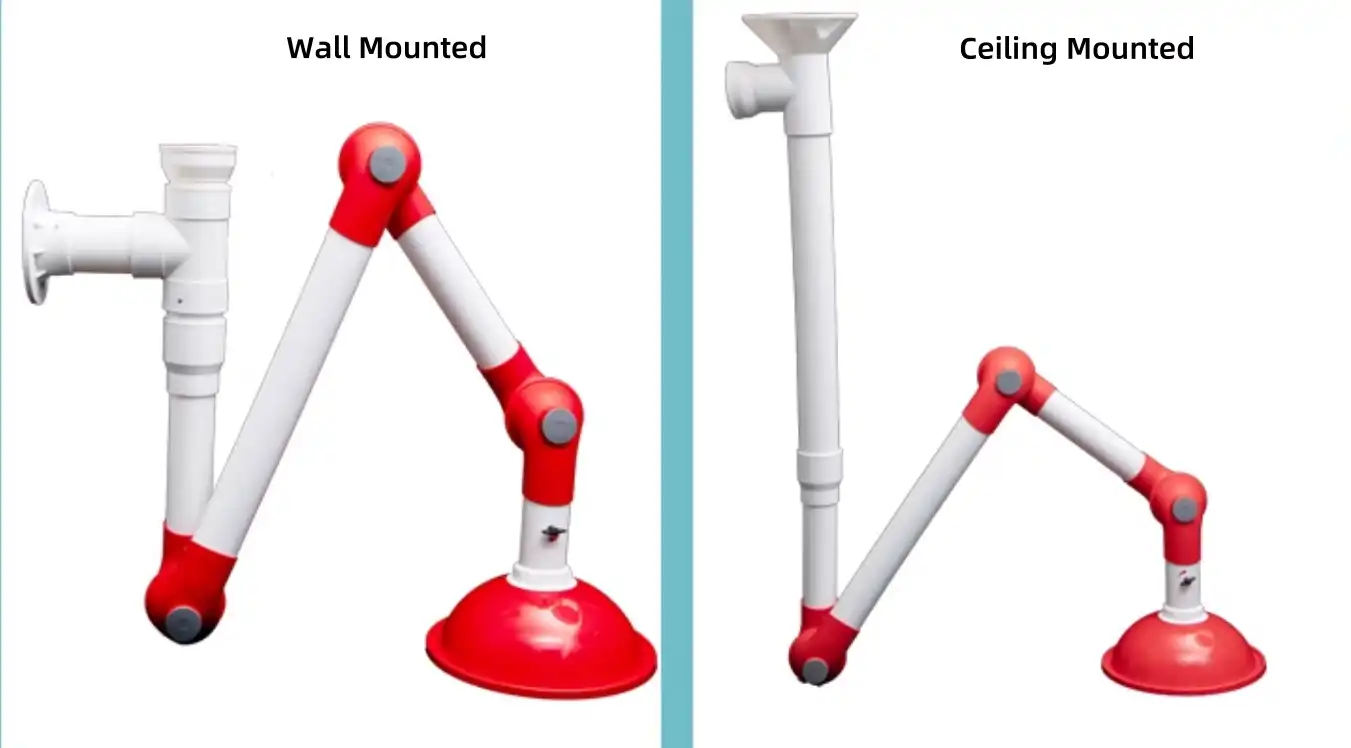
Troubleshooting and Repair Guidelines
Common Issues and Solutions
Understanding common issues that affect Fume Extractor Arm PP And Aluminum Alloy systems helps maintenance teams respond quickly and effectively to problems. Typical issues include reduced airflow, joint stiffness, and seal degradation. The high-density polypropylene joints may occasionally require adjustment to maintain smooth 360-degree movement. Similarly, the corrosion-resistant high-density rubber sealing rings might need replacement if they show signs of wear. Maintenance teams should develop comprehensive troubleshooting protocols that address these common issues while maintaining system integrity.
Emergency Repair Procedures
Emergency repair procedures for the Fume Extractor Arm PP And Aluminum Alloy system must be well-documented and readily available. These procedures should cover various scenarios, from minor seal replacements to major component failures. The design featuring high-density polypropylene joints allows for quick disassembly and reassembly during repairs. Special attention should be paid to maintaining the integrity of sealing rings and ensuring proper alignment of all components during emergency repairs.
Documentation and Reporting Requirements
Proper documentation of all maintenance and repair activities is essential for managing Fume Extractor Arm PP And Aluminum Alloy systems effectively. This includes detailed records of inspections, maintenance procedures, repairs, and component replacements. The documentation should track the performance of high-density polypropylene joints and corrosion-resistant rubber sealing rings, noting any patterns in wear or degradation. This information helps optimize maintenance schedules and improve system reliability over time.
Conclusion
Proper maintenance of a fume extractor arm made of PP and aluminum alloy is crucial for ensuring laboratory safety and equipment longevity. By following comprehensive maintenance protocols, including regular inspections, cleaning procedures, and preventive maintenance strategies, organizations can maximize the performance and lifespan of their extraction systems.
Ready to upgrade your laboratory safety equipment with high-quality fume extractor arms? Xi'an Xunling Electronic Technology Co., Ltd. offers premium solutions with 5-day delivery, 5-year warranty, and custom-made options to meet your specific needs. Experience our one-stop service and benefit from our OEM support, fast delivery, and secure packaging. Contact Us today at xalabfurniture@163.com to discuss your requirements and join our growing list of satisfied customers worldwide.
References
1. Smith, J.D., & Johnson, R.A. (2023). "Modern Laboratory Ventilation Systems: Maintenance and Operation." Journal of Laboratory Safety, 45(2), 112-128.
2. Chen, X., & Liu, Y. (2023). "Advances in PP and Aluminum Alloy Applications in Laboratory Equipment." Materials Science and Engineering, 18(4), 245-262.
3. Thompson, M.E. (2024). "Preventive Maintenance Strategies for Laboratory Extraction Systems." International Journal of Laboratory Management, 12(1), 78-95.
4. Rodriguez, C.M., et al. (2023). "Long-term Performance Analysis of PP-Aluminum Composite Extraction Arms." Laboratory Equipment Studies, 29(3), 334-351.
5. Wilson, P.K., & Brown, S.L. (2024). "Chemical Resistance Properties of Modern Laboratory Ventilation Components." Journal of Chemical Engineering, 56(1), 89-106.
6. Zhang, H., & Wang, L. (2023). "Optimization of Maintenance Protocols for Laboratory Extraction Systems." International Conference on Laboratory Safety and Management, Conference Proceedings, 178-195.







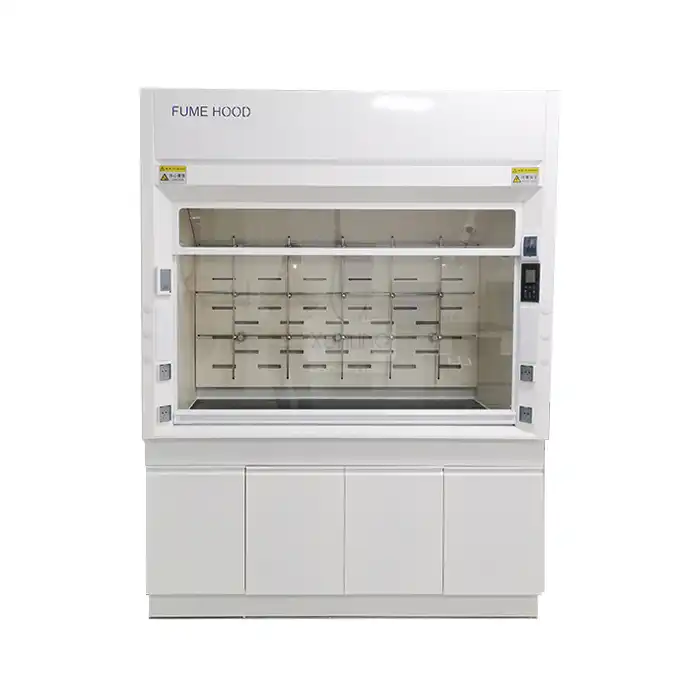

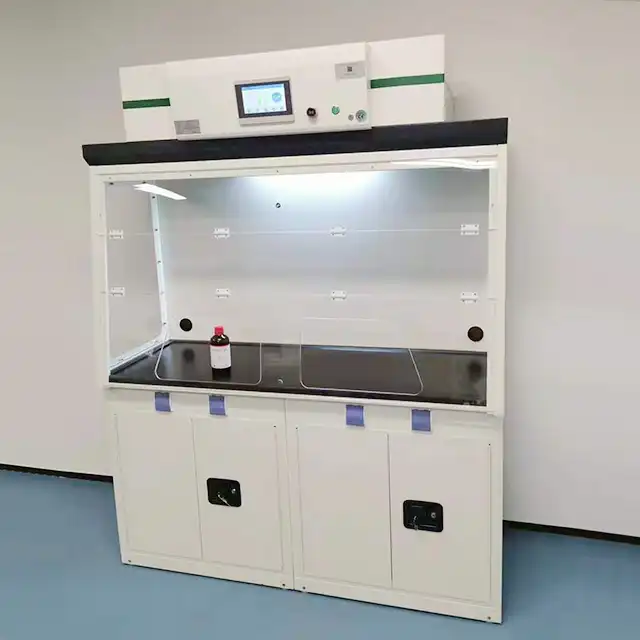
_1741166473547.webp)
